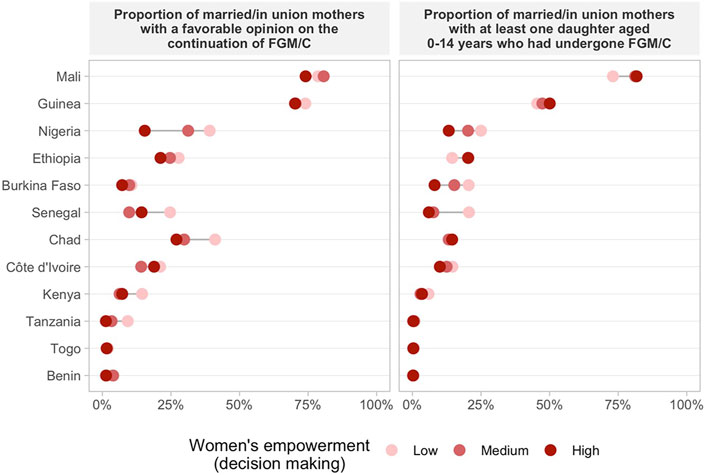Quantitative measures play a crucial role in assessing levels of women's empowerment, which is central in the global health and development contexts. The SWPER (Survey-based Women’s emPowERment index, pronounced simply as super) Global was the first individual-level empowerment indicator to enable comparisons across multiple low- and middle-income countries and over time. It was developed and validated using data from the Demographic and Health Surveys and enables detailed analyses of empowerment either as an outcome or a determinant of health.
The SWPER Global was created using 14 questions from the woman’s individual questionnaire and is composed of three well-recognized domains of women's empowerment:
Using data from DHS surveys, individual scores can be calculated using a linear combination of the relevant variables, the coefficients of which were obtained through principal component analysis (PCA). The coefficients were adjusted so that the scores are standardized, that is, they have a mean of zero and a standard deviation of one for the original set of countries used to develop the index.
For each domain, the value of zero represents the average empowerment level of the 62 low- and middle-income countries on which the SWPER is based. Positive values indicate that the average level of empowerment in that country is higher than the average of LMICs, and negative values indicate that the level of women’s empowerment is lower than the average of LMICs.
Figure 1 below illustrates one of the many strategies that can be used to investigate the association between empowerment levels as measured by SWPER Global and health outcomes. In this example, the association between the SWPER decision-making domain and the women’s opinion on whether the practice of female genital mutilation/cutting (FGM/C*) should be continued or stopped is presented in equiplots. The positive association indicates that as the level of empowerment increases, the women’s acceptance of FGM/C decreases.
* Note: You can download from the link below the definition of all indicators used at the International Center for Equity in Health, including the FGM/C:
1. The SWPER index for women's empowerment in Africa: development and validation of an index based on survey data. Ewerling, F. et al. The Lancet Global Health, Volume 5, Issue 9, e916 - e923.
2. SWPER Global: A survey-based women’s empowerment index expanded from Africa to all low- and middle-income countries. Ewerling, F. et al. Journal of Global Health, Volume 10, Issue 2, 020434.
 Figure 1 – Proportion of married/in union mothers with a favorable opinion on the continuation of FGM/C and at least one daughter aged 0–14 years who had undergone FGM/C by women’s empowerment level on decision-making (https://doi.org/10.3389/fsoc.2021.685329).
Figure 1 – Proportion of married/in union mothers with a favorable opinion on the continuation of FGM/C and at least one daughter aged 0–14 years who had undergone FGM/C by women’s empowerment level on decision-making (https://doi.org/10.3389/fsoc.2021.685329).